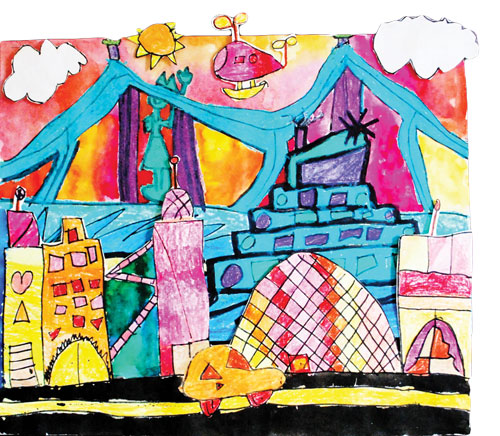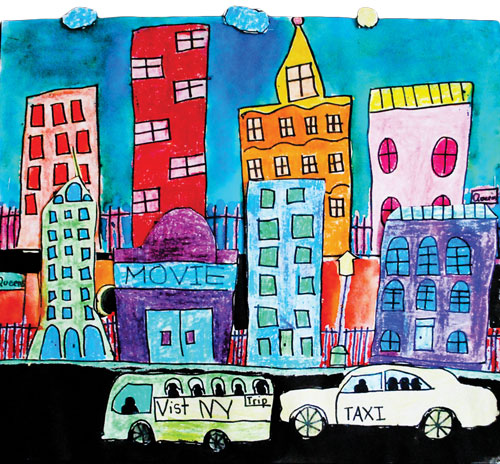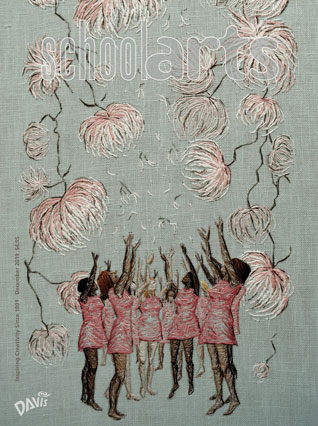 |
| Isabela M. |
Our class discussion of the various shapes and sizes of the buildings, the decorative architecture of the windows and doors, the rooftop gardens, and elaborate balconies inspired us to create our own city compositions.
New York Architecture
We talked about functional buildings— fire and police stations, libraries, museums, stores, restaurants, hospitals, and schools—and how they contrast with areas of natural environments such as parks, zoos, gardens, and the waterfront. All of these attractions bring people to the city by some mode of transportation. Cars, buses, trains, airplanes, helicopters, and taxis add to the energy and movement created in our city artwork.
Before students began sketching their cities, I reintroduced and discussed the elements of art and principles of design, including color, texture, shape, line, value, movement, balance, and rhythm.
Busy City Criteria
Students drew two layers of city life. They had free choice to decide what each layer would contain. They kept in mind that one of the layers would contain all of the “sky” things, such as clouds and airplanes, and the second layer would have the sky colored in. One layer could contain buildings, bridges, and boats, while the second layer could show parks, zoos, people, cars, and trucks.
 |
| Michelle S. |
After reviewing warm and cool color schemes, students colored each layer with warm or cool colors. They learned how to overlap colors from the same color family to create a shaded look. They really enjoyed this “new” approach to using crayons.
The background and sky was done in watercolor as students explored ways to apply the paint by wetting the paper, overlapping the colors to create “bleeding,” and more. Students chose the watercolor complement to their crayon color for the background.
Assembling the Composition
All of the sky objects, such as the sun, clouds, and airplanes, were completely cut out and saved from one of students’ layers of city life. Next, from that same layer, the empty nonpainted sky was cut off, leaving the skyline of buildings, etc.
The second layer, with the watercolor sky, was glued onto the upper half of a solid color background paper. The first layer was then attached overlapping the second layer by using cut pieces of foam core. This created a “pop-up” look and added depth to the cities. The sun, clouds, and other sky objects were added to the watercolor sky with small foam core pieces glued on the back, balancing the depth created by the lower layer of the city.
Our colorful cities were so much fun to look at as each student featured a different view of city life, making a spectacular, effervescent display of busy cities!
Barbara Hildebrandt is an artist and art teacher at Franklin and Jefferson Elementary Schools in Bergenfield, New Jersey. artblh@yahoo.com
NATIONAL STANDARD
Connecting: Relating artistic ideas and work with personal meaning and external context.
WEB LINK
Unsplash City Architecture: unsplash.com/search/photos/cityarchitecture
View this article in the digital edition.




